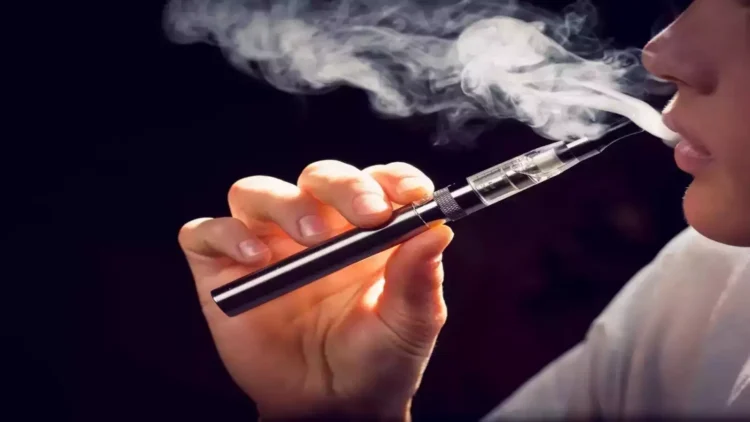The vaping industry has seen significant growth over the last decade, with a market value projected to reach $182.84 billion by 2030, according to Grand View Research. This rapid expansion has brought with it a surge in flavour options, as manufacturers aim to cater to a diverse and ever-growing consumer base. But what exactly is shaping today’s vape flavours preferences? A closer look reveals key trends influenced by demographics, consumer behaviour, and evolving regulations.
The Statistics Behind Flavour Choices
- Fruit Flavours Dominate
Fruit-based e-liquids remain the most popular category among vapers. A 2023 survey by Euromonitor International found that over 55% of vapers reported fruit flavours as their preferred choice. Popular options include mango, strawberry, and mixed berry blends, which appeal to users seeking a sweet yet refreshing vaping experience. - Menthol and Mint are Close Contenders
For those who enjoy a crisp and cooling sensation, menthol and mint flavours have become a staple. Research by Statista revealed that 25% of vapers rank menthol among their top preferences, highlighting its enduring appeal as a classic option that complements a wide range of e-liquid profiles. - Dessert and Beverage Flavours on the Rise
Dessert- and beverage-inspired flavours such as vanilla custard and coffee blends are seeing increased popularity, particularly among vapers who use the activity as a substitute for snacking or smoking. In 2023, dessert flavours accounted for approximately 15% of the market share, reflecting their growing appeal.
Demographics and Flavour Preferences
- Younger Vapers Favour Sweet Flavours
Among younger vapers aged 18–24, sweet and fruity flavours are especially popular. A 2022 report by Tobacco Control found that 68% of young adult vapers gravitate towards these categories, citing the fun and dynamic taste profiles as their main appeal. - Older Vapers Prefer Tobacco and Classic Options
In contrast, older vapers aged 35 and over often prefer tobacco or neutral flavours, as they’re more likely to be former smokers transitioning to vaping. The same Tobacco Control study revealed that 47% of vapers over 35 chose tobacco flavours as their primary option, appreciating their similarity to traditional cigarettes.
The Role of Regulations
Government regulations also significantly influence vape flavour preferences. For example:
- In the US, the FDA banned certain flavoured pods in 2020 to reduce vaping among minors, which caused a shift towards open systems and refillable e-liquids.
- In the UK, flavour bans have not been as restrictive, allowing sites to offer a wide variety of options, catering to diverse preferences.
Regulatory environments often determine the availability of flavours in different regions, pushing consumers to adapt their preferences based on what’s legally accessible.
What Drives Consumer Choices?
- Taste and Sensory Experience
According to a 2023 Nicotine & Tobacco Research study, 80% of vapers cited flavours as the most important factor when choosing e-liquids. The sensory experience of vaping plays a huge role, with users seeking out bold, layered flavours that leave a lasting impression. - Nicotine Strength Pairing
Many users choose flavours based on the nicotine strength they require. For instance, lower nicotine levels often pair well with sweeter and more complex flavours, while higher nicotine options are frequently paired with simpler profiles like tobacco and menthol. - Customisation and Variety
The vaping community values the ability to experiment. Platforms like vape-jucce.com offer extensive flavour selections, allowing users to customise their vaping experience to suit their moods and preferences. This flexibility has been a key driver of diversity in vape flavours.
Future Trends in Vape Flavours
As the industry continues to evolve, several trends are emerging:
- Natural and Organic Flavours: Consumers are increasingly seeking natural and organic e-liquids, reflecting a broader trend towards clean-label products.
- CBD and Nootropic Infusions: Flavours infused with CBD or other functional ingredients are becoming popular for their potential wellness benefits.
- Regional and Cultural Influences: Flavours inspired by traditional beverages, desserts, or fruit from specific regions are gaining traction, adding a sense of novelty and connection to global cultures.
Summing Up
Today’s vape flavours preferences are shaped by a mix of demographics, personal tastes, and regulatory factors. While younger vapers lean towards sweet and fruity profiles, older users often opt for tobacco or menthol. Consumer demand for variety, quality, and innovation ensures that the an array of options to satisfy every palate will be available. As the industry grows, the focus remains on delivering an exceptional and personalised experience that prioritises quality over fleeting trends.

